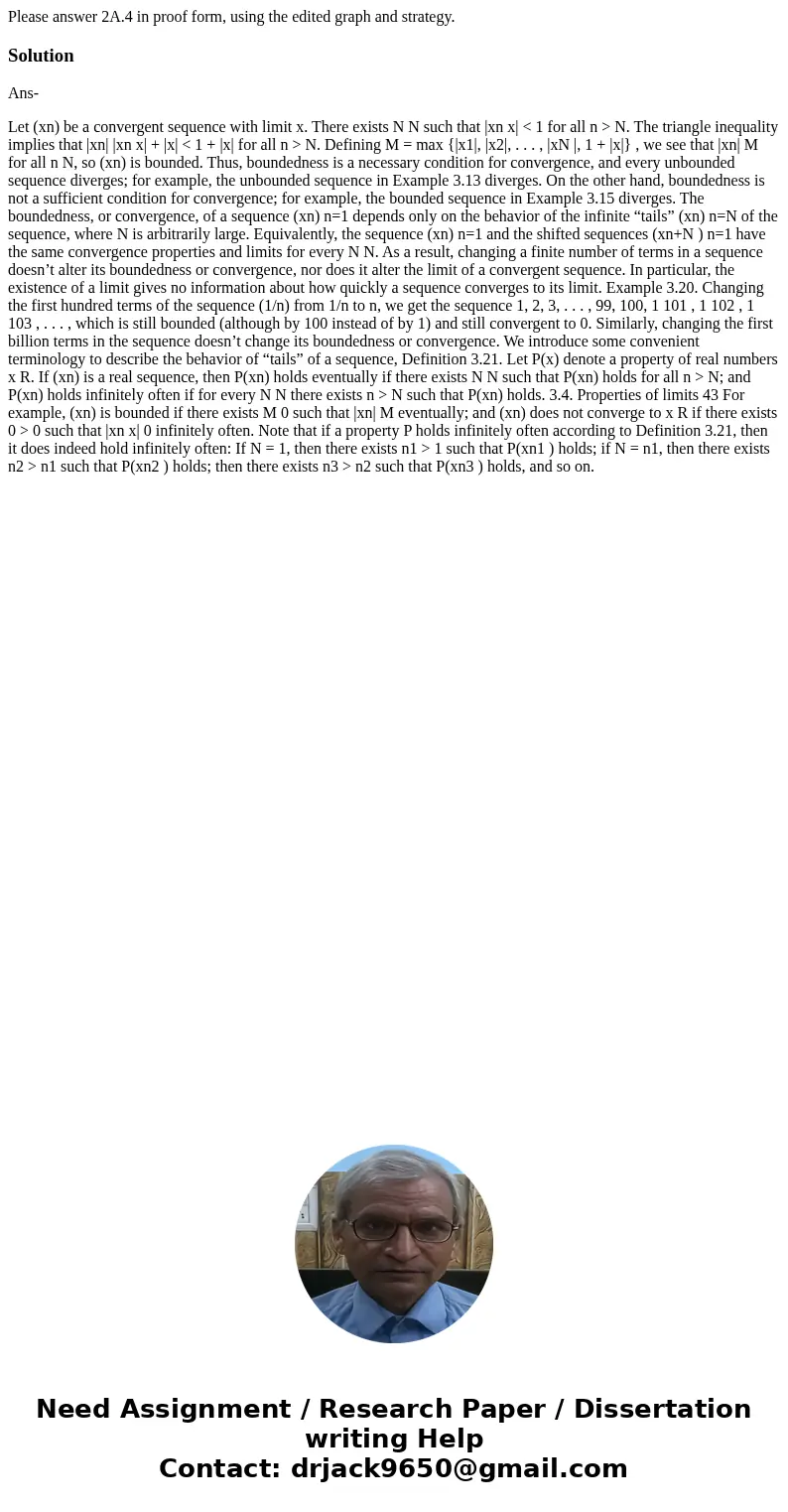Please answer 2A4 in proof form using the edited graph and s
Please answer 2A.4 in proof form, using the edited graph and strategy.
Solution
Ans-
Let (xn) be a convergent sequence with limit x. There exists N N such that |xn x| < 1 for all n > N. The triangle inequality implies that |xn| |xn x| + |x| < 1 + |x| for all n > N. Defining M = max {|x1|, |x2|, . . . , |xN |, 1 + |x|} , we see that |xn| M for all n N, so (xn) is bounded. Thus, boundedness is a necessary condition for convergence, and every unbounded sequence diverges; for example, the unbounded sequence in Example 3.13 diverges. On the other hand, boundedness is not a sufficient condition for convergence; for example, the bounded sequence in Example 3.15 diverges. The boundedness, or convergence, of a sequence (xn) n=1 depends only on the behavior of the infinite “tails” (xn) n=N of the sequence, where N is arbitrarily large. Equivalently, the sequence (xn) n=1 and the shifted sequences (xn+N ) n=1 have the same convergence properties and limits for every N N. As a result, changing a finite number of terms in a sequence doesn’t alter its boundedness or convergence, nor does it alter the limit of a convergent sequence. In particular, the existence of a limit gives no information about how quickly a sequence converges to its limit. Example 3.20. Changing the first hundred terms of the sequence (1/n) from 1/n to n, we get the sequence 1, 2, 3, . . . , 99, 100, 1 101 , 1 102 , 1 103 , . . . , which is still bounded (although by 100 instead of by 1) and still convergent to 0. Similarly, changing the first billion terms in the sequence doesn’t change its boundedness or convergence. We introduce some convenient terminology to describe the behavior of “tails” of a sequence, Definition 3.21. Let P(x) denote a property of real numbers x R. If (xn) is a real sequence, then P(xn) holds eventually if there exists N N such that P(xn) holds for all n > N; and P(xn) holds infinitely often if for every N N there exists n > N such that P(xn) holds. 3.4. Properties of limits 43 For example, (xn) is bounded if there exists M 0 such that |xn| M eventually; and (xn) does not converge to x R if there exists 0 > 0 such that |xn x| 0 infinitely often. Note that if a property P holds infinitely often according to Definition 3.21, then it does indeed hold infinitely often: If N = 1, then there exists n1 > 1 such that P(xn1 ) holds; if N = n1, then there exists n2 > n1 such that P(xn2 ) holds; then there exists n3 > n2 such that P(xn3 ) holds, and so on.

 Homework Sourse
Homework Sourse